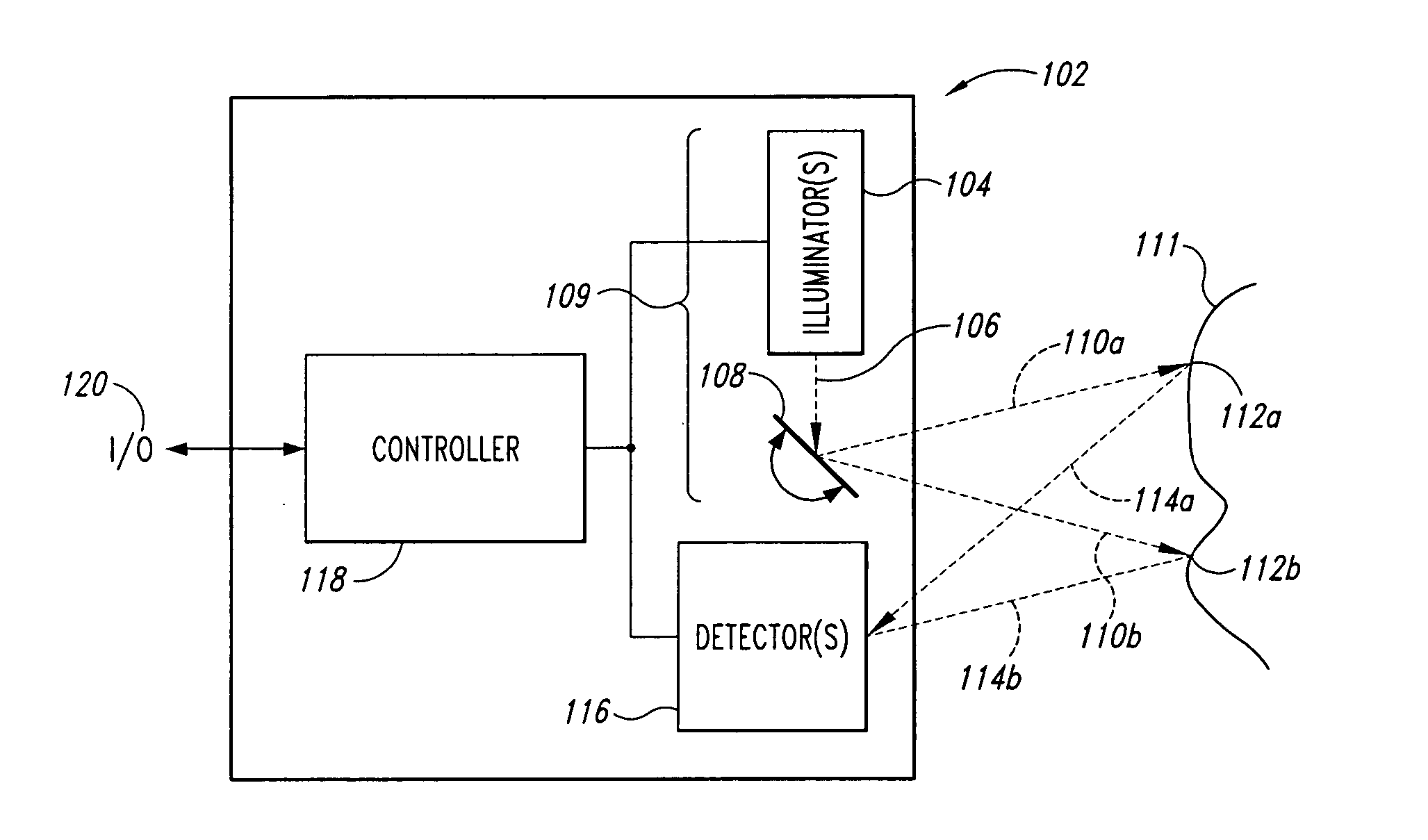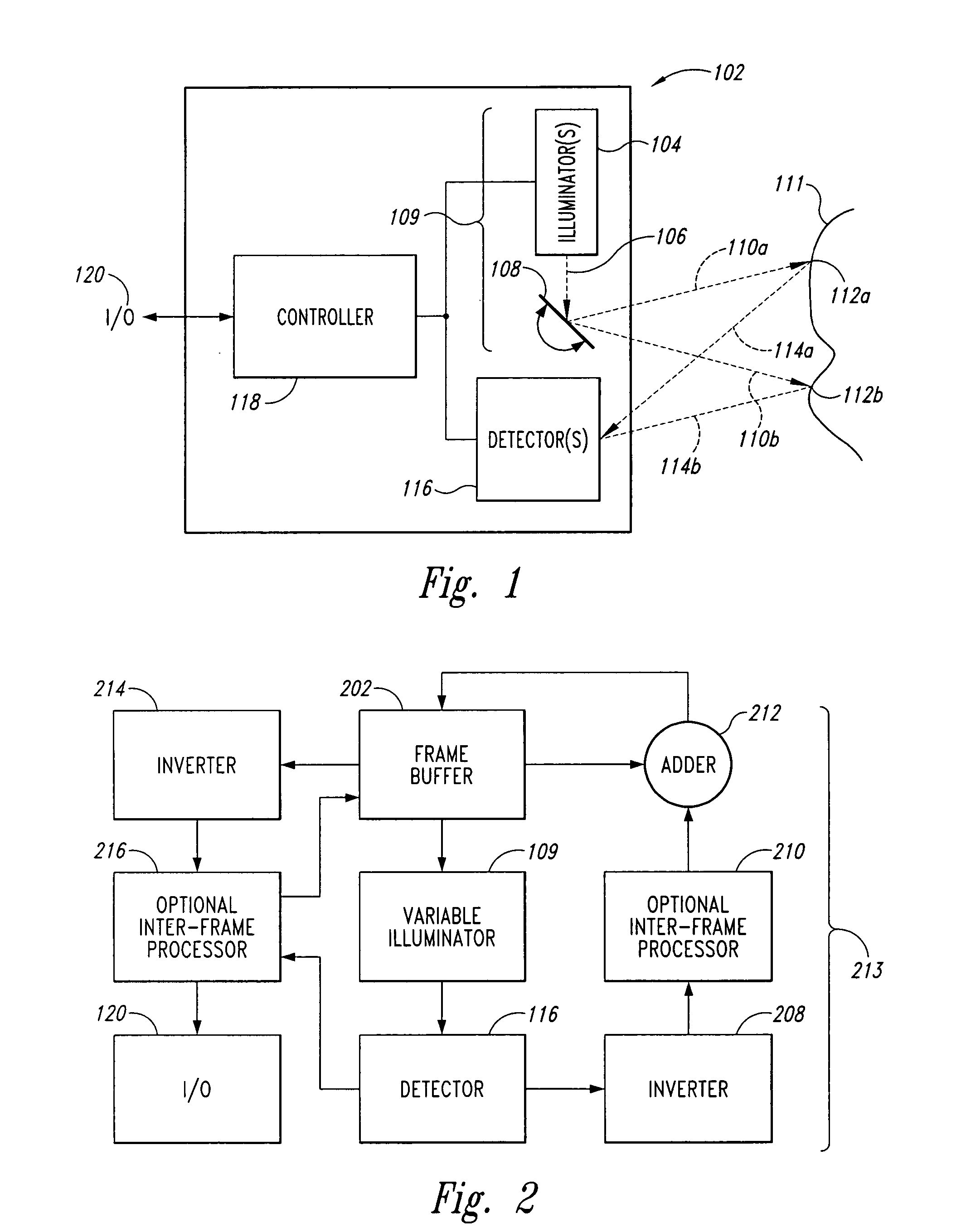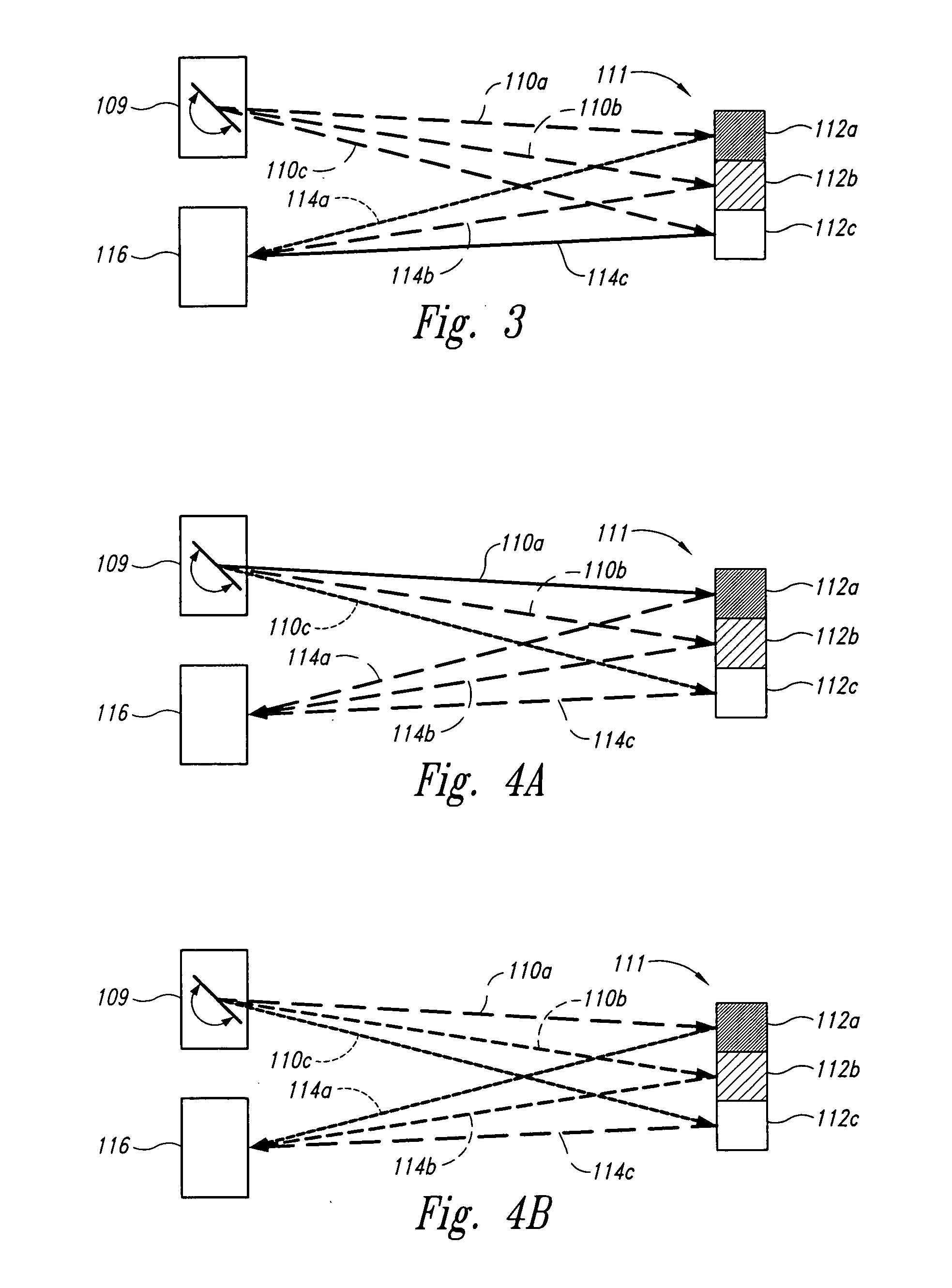Scanning endoscope
a scanning beam and endoscope technology, applied in the field of scanning beam systems, can solve the problems of limiting the image quality and dynamic range of digital endoscopes and laparoscopes, exhibiting other undesirable artifacts, and limiting the diameter of the endoscope, so as to achieve the effect of achieving high resolution
- Summary
- Abstract
- Description
- Claims
- Application Information
AI Technical Summary
Benefits of technology
Problems solved by technology
Method used
Image
Examples
Embodiment Construction
[0057]FIG. 1 shows a block diagram of a scanned beam imager 102. An illuminator 104 creates a first beam of light 106. A scanner 108 deflects the first beam of light across a field-of-view (FOV) to produce a second scanned beam of light 110, shown in two positions 110a and 110b. The scanned beam of light 110 sequentially illuminates spots 112 in the FOV, shown as positions 112a and 112b, corresponding to beam positions 110a and 110b, respectively. While the beam 110 illuminates the spots 112, the illuminating light beam 110 is reflected, absorbed, scattered, refracted, or otherwise affected by the properties of the object or material to produced scattered light energy. A portion of the scattered light energy 114, shown emanating from spot positions 112a and 112b as scattered energy rays 114a and 114b, respectively, travels to one or more detectors 116 that receive the light and produce electrical signals corresponding to the amount of light energy received. The electrical signals dr...
PUM
 Login to View More
Login to View More Abstract
Description
Claims
Application Information
 Login to View More
Login to View More - R&D
- Intellectual Property
- Life Sciences
- Materials
- Tech Scout
- Unparalleled Data Quality
- Higher Quality Content
- 60% Fewer Hallucinations
Browse by: Latest US Patents, China's latest patents, Technical Efficacy Thesaurus, Application Domain, Technology Topic, Popular Technical Reports.
© 2025 PatSnap. All rights reserved.Legal|Privacy policy|Modern Slavery Act Transparency Statement|Sitemap|About US| Contact US: help@patsnap.com



